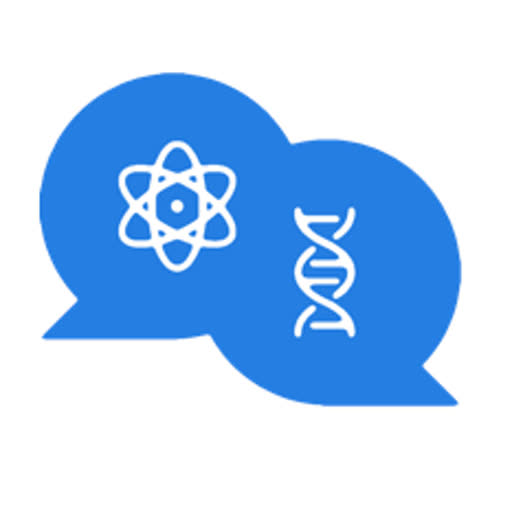- People
- Nancy Beverly

edit picture
change password
change preferences
48 Contributions
0 Reports
Member of

Living Physics Portal Team

Humanized Physics Project
new team
Nancy Beverly
Pedagogical Methods Used
Peer Instruction / Think-Pair-Share, Collaborative problem-solving, Conceptually-oriented activities, Context-rich problems, Project-based learning, Guided inquiry, SCALE-UP / studio / workshop physics, Modeling Instruction, Mathematically-focused activities, Experimentally-focused activities
Life Sciences Focus
Write a few short phrases describing the areas of life science that you focus on in your teaching.
640 characters remaining.Biomechanics, physiology, diagnostic tools, therapeutic modalities, biomedical research techniques. Expanding into the cellular and molecular realm
Education Research and Pedagogy Expertise
Write a few short phrases describing areas of education research or pedagogy where you have particular expertise that you could share with other users.
640 characters remaining.Project-based Learning, Competency Assessment, Tailoring curriculum to student interests and needs, Student-driven inquiry
Describe the courses that you teach for life sciences students
Write a short paragraph.
640 characters remaining.Physics for Life Sciences I & II sequence is algebra-based, integrated with lab activities, primarily serving pre-PT, pre-med, pre-vet, pre-dent, and clinical-track exercise science students. Physics of the Human Body is a conceptual one semester course primarily for occupational therapy assistant and performance-track exercise science students. Physics for the Biological Sciences I & II sequence is calculus-based integrated with lab activities, primarily serving biology majors and pre-med students.
What is your approach to teaching physics for life science students?
Write a short paragraph.
640 characters remaining.My goal is is enable students to be able to integrate physics into their future life/health science pursuits. Throughout the course, students practice using physics to enrich their understanding of their own self-selected life scenarios and phenomena
CONTRIBUTIONS
Archive of introductory labs with human body contexts covering a full two semesters, versions from Doane College and U of Neb-Lincoln
Motion in Two Dimensions, Newton's First Law, Nuclear Physics, Geometrical Optics, Resonance, Position & Displacement, Velocity, Acceleration, Force & Acceleration, Interacting Objects, Action/Reaction, Work, Conservation of Energy, Mechanical Power, Impedance and Dispersion, Wave Properties of Sound, Reflection and Refraction (Sound), Reflection, Refraction, Transmission, Capacitors, Ohm's Law, RC Circuits, Magnetic Fields
Radiographic Imaging, Ultrasound & Doppler, Healthy Neural Function, Vision, Hearing, Cardiovascular System, Human Thermoregulation, Locomotion and Gait, Biomechanics
Archive of intro level labs with human body contexts. This module replaces the traditional mechanics labs with focus on human movement
Motion in Two Dimensions, Newton's First Law, Position & Displacement, Velocity, Acceleration, Force & Acceleration, Interacting Objects, Action/Reaction, Work, Conservation of Energy, Mechanical Power
Locomotion and Gait, Biomechanics
Introductory level labs with human body contexts in sound, including hearing, speech, ultrasound imaging and Doppler, with audio files
Resonance, Impedance and Dispersion, Wave Properties of Sound, Reflection and Refraction (Sound), Reflection, Refraction, Transmission
Ultrasound & Doppler, Healthy Hearing
Archive of introductory level labs with human body contexts
Motion in Two Dimensions, Newton's First Law, Nuclear Physics, Geometrical Optics, Resonance, Position & Displacement, Velocity, Acceleration, Force & Acceleration, Interacting Objects, Action/Reaction, Work, Conservation of Energy, Mechanical Power, Impedance and Dispersion, Wave Properties of Sound, Reflection and Refraction (Sound), Reflection, Refraction, Transmission, Capacitors, Ohm's Law, RC Circuits, Magnetic Fields
Radiographic Imaging, Ultrasound & Doppler, Healthy Neural Function, Vision, Hearing, Cardiovascular System, Human Thermoregulation, Locomotion and Gait, Biomechanics
Introductory level labs with human body contexts in area of light and optics focusing on vision
Geometrical Optics
Vision
Archive of introductory level labs with human body contexts
Motion in Two Dimensions, Newton's First Law, Nuclear Physics, Geometrical Optics, Resonance, Position & Displacement, Velocity, Acceleration, Force & Acceleration, Interacting Objects, Action/Reaction, Work, Conservation of Energy, Mechanical Power, Impedance and Dispersion, Wave Properties of Sound, Reflection and Refraction (Sound), Reflection, Refraction, Transmission, Capacitors, Ohm's Law, RC Circuits, Magnetic Fields
Radiographic Imaging, Ultrasound & Doppler, Healthy Neural Function, Vision, Hearing, Cardiovascular System, Human Thermoregulation, Locomotion and Gait, Biomechanics
Archive of introductory level labs with human body contexts
Motion in Two Dimensions, Newton's First Law, Nuclear Physics, Geometrical Optics, Resonance, Position & Displacement, Velocity, Acceleration, Force & Acceleration, Interacting Objects, Action/Reaction, Work, Conservation of Energy, Mechanical Power, Impedance and Dispersion, Wave Properties of Sound, Reflection and Refraction (Sound), Reflection, Refraction, Transmission, Capacitors, Ohm's Law, RC Circuits, Magnetic Fields
Radiographic Imaging, Ultrasound & Doppler, Healthy Neural Function, Vision, Hearing, Cardiovascular System, Human Thermoregulation, Locomotion and Gait, Biomechanics
Archived Biomechanics student activities replacing mechanics of IPLS course as part of the Humanized Physics Project (2001-2004)
Motion in One Dimension, Motion in Two Dimensions, Newton's First Law, Newton's Second Law, Newton's Third Law, Statics of Rigid Bodies, Applications of Newton's Laws, Gravity, Work and Energy, Oscillations, Resonance, Physical Pendula
Biomechanics, Locomotion and Gait, Biomechanics of Daily Activities, Exercise Biomechanics, Sports/dance Performance, Kinesiology
Archived Biomechanics student activities replacing mechanics in a IPLS course as part of the Humanized Physics Project (2001-2004)
Motion in One Dimension, Motion in Two Dimensions, Newton's First Law, Newton's Second Law, Newton's Third Law, Statics of Rigid Bodies, Applications of Newton's Laws, Gravity, Work and Energy, Resonance, Physical Pendula
Biomechanics, Locomotion and Gait, Sports/dance Performance, Exercise Biomechanics, Biomechanics of Daily Activities, Injury and Injury Prevention
Archived IPLS Biomechanics student activities for 1D Motion and Forces as part of the Humanized Physics Project (2001-2004)
Motion in One Dimension, Newton's Second Law, Newton's Third Law, Applications of Newton's Laws, Gravity
Biomechanics, Exercise Biomechanics, Biomechanics of Daily Activities
Archived IPLS Biomechanics student activities for 2D Motion and Forces, as part of the Humanized Physics Project (2001-2004)
Motion in Two Dimensions, Newton's Second Law, Newton's Third Law, Applications of Newton's Laws, Gravity
Biomechanics, Locomotion and Gait, Sports/dance Performance, Exercise Biomechanics, Biomechanics of Daily Activities
Archived ILPS Biomechanics student activities for oscillations as part of the Humanized Physics Project (2001-2004)
Oscillations, Resonance, Physical Pendula
Biomechanics, Locomotion and Gait, Biomechanics of Daily Activities, Exercise Biomechanics, Sports/dance Performance, Kinesiology
Archived Biomechanics student activities replacing mechanics of IPLS course as part of the Humanized Physics Project (2001-2004)
Motion in One Dimension, Motion in Two Dimensions, Newton's First Law, Newton's Second Law, Newton's Third Law, Statics of Rigid Bodies, Applications of Newton's Laws, Gravity, Work and Energy, Oscillations, Resonance, Physical Pendula
Biomechanics, Locomotion and Gait, Biomechanics of Daily Activities, Exercise Biomechanics, Sports/dance Performance, Kinesiology
Introductory class, lab, and homework activities involving kinematics and Newton's laws in the context of human biomechanics
Position & Displacement, Velocity, Acceleration, Position & Displacement, 2D Velocity, 2D Acceleration, Projectile Motion, Center of Mass, Force & Acceleration, Interacting Objects, Action/Reaction, Friction
Exercise Biomechanics, Biomechanics of Daily Activities, Locomotion and Gait
Introductory class, lab, and homework activities involving kinematics and Newton's laws in the context of human biomechanics
Position & Displacement, Velocity, Acceleration, Position & Displacement, 2D Velocity, 2D Acceleration, Projectile Motion, Center of Mass, Force & Acceleration, Interacting Objects, Action/Reaction, Friction
Exercise Biomechanics, Biomechanics of Daily Activities, Locomotion and Gait
Introduction to human motion - kinematic activities of 1D scenarios of human movement
Position & Displacement, Velocity, Acceleration, Gravitational Acceleration
Biomechanics of Daily Activities, Exercise Biomechanics
Introductory class, lab, and homework activities involving kinematics and Newton's laws in the context of human biomechanics
Position & Displacement, Velocity, Acceleration, Position & Displacement, 2D Velocity, 2D Acceleration, Projectile Motion, Center of Mass, Force & Acceleration, Interacting Objects, Action/Reaction, Friction
Exercise Biomechanics, Biomechanics of Daily Activities, Locomotion and Gait
Introductory class, lab, and homework activities involving kinematics and Newton's laws in the context of human biomechanics
Position & Displacement, Velocity, Acceleration, Position & Displacement, 2D Velocity, 2D Acceleration, Projectile Motion, Center of Mass, Force & Acceleration, Interacting Objects, Action/Reaction, Friction
Exercise Biomechanics, Biomechanics of Daily Activities, Locomotion and Gait
Introductory 1D Motion and Forces in the Biomechanical context of 1D vertical human movement
Position & Displacement, Velocity, Acceleration, Gravitational Acceleration, Force & Acceleration, Interacting Objects, Action/Reaction
Exercise Biomechanics, Biomechanics of Daily Activities
Introductory class, lab, and homework activities involving kinematics and Newton's laws in the context of human biomechanics
Position & Displacement, Velocity, Acceleration, Position & Displacement, 2D Velocity, 2D Acceleration, Projectile Motion, Center of Mass, Force & Acceleration, Interacting Objects, Action/Reaction, Friction
Exercise Biomechanics, Biomechanics of Daily Activities, Locomotion and Gait
Introductory 1D motion and 1D forces prediction worksheets for 1D scenarios of human movement
Position & Displacement, Velocity, Acceleration, Gravitational Acceleration, Force & Acceleration, Action/Reaction
Biomechanics of Daily Activities, Exercise Biomechanics
Introductory class, lab, and homework activities involving kinematics and Newton's laws in the context of human biomechanics
Position & Displacement, Velocity, Acceleration, Position & Displacement, 2D Velocity, 2D Acceleration, Projectile Motion, Center of Mass, Force & Acceleration, Interacting Objects, Action/Reaction, Friction
Exercise Biomechanics, Biomechanics of Daily Activities, Locomotion and Gait
Introductory class, lab, and homework activities involving kinematics and Newton's laws in the context of human biomechanics
Position & Displacement, Velocity, Acceleration, Position & Displacement, 2D Velocity, 2D Acceleration, Projectile Motion, Center of Mass, Force & Acceleration, Interacting Objects, Action/Reaction, Friction
Exercise Biomechanics, Biomechanics of Daily Activities, Locomotion and Gait
Introductory 1D Motion with 1D Forces - Worksheets and quizzes on 1D human movement
Position & Displacement, Velocity, Acceleration, Gravitational Acceleration, Force & Acceleration
Biomechanics of Daily Activities, Exercise Biomechanics
Introductory class, lab, and homework activities involving kinematics and Newton's laws in the context of human biomechanics
Position & Displacement, Velocity, Acceleration, Position & Displacement, 2D Velocity, 2D Acceleration, Projectile Motion, Center of Mass, Force & Acceleration, Interacting Objects, Action/Reaction, Friction
Exercise Biomechanics, Biomechanics of Daily Activities, Locomotion and Gait
Introduction of friction in human movement - worksheet scenarios of 1D motion with friction
Velocity, Acceleration, Force & Acceleration, Interacting Objects, Friction
Biomechanics of Daily Activities
Introductory class, lab, and homework activities involving kinematics and Newton's laws in the context of human biomechanics
Position & Displacement, Velocity, Acceleration, Position & Displacement, 2D Velocity, 2D Acceleration, Projectile Motion, Center of Mass, Force & Acceleration, Interacting Objects, Action/Reaction, Friction
Exercise Biomechanics, Biomechanics of Daily Activities, Locomotion and Gait
Students predict and interpret their own 2D human motion as a sequence of simpler segments. Constant acceleration does not dominate.
Position & Displacement, 2D Velocity, 2D Acceleration, Projectile Motion, Center of Mass
Biomechanics
Introductory class, lab, and homework activities involving kinematics and Newton's laws in the context of human biomechanics
Position & Displacement, Velocity, Acceleration, Position & Displacement, 2D Velocity, 2D Acceleration, Projectile Motion, Center of Mass, Force & Acceleration, Interacting Objects, Action/Reaction, Friction
Exercise Biomechanics, Biomechanics of Daily Activities, Locomotion and Gait
Introductory class, lab, and homework activities involving kinematics and Newton's laws in the context of human biomechanics
Position & Displacement, Velocity, Acceleration, Position & Displacement, 2D Velocity, 2D Acceleration, Projectile Motion, Center of Mass, Force & Acceleration, Interacting Objects, Action/Reaction, Friction
Exercise Biomechanics, Biomechanics of Daily Activities, Locomotion and Gait
Introductory class, lab, and homework activities involving kinematics and Newton's laws in the context of human biomechanics
Position & Displacement, Velocity, Acceleration, Position & Displacement, 2D Velocity, 2D Acceleration, Projectile Motion, Center of Mass, Force & Acceleration, Interacting Objects, Action/Reaction, Friction
Exercise Biomechanics, Biomechanics of Daily Activities, Locomotion and Gait
Introductory 2D kinematics with 2D forces using Newton's laws in the context of human biomechanics
Measuring Inertia, Inertia at Rest, Inertia in Motion, Force & Acceleration, Interacting Objects, Action/Reaction, Friction
Exercise Biomechanics, Biomechanics of Daily Activities, Locomotion and Gait
Introductory class, lab, and homework activities involving kinematics and Newton's laws in the context of human biomechanics
Position & Displacement, Velocity, Acceleration, Position & Displacement, 2D Velocity, 2D Acceleration, Projectile Motion, Center of Mass, Force & Acceleration, Interacting Objects, Action/Reaction, Friction
Exercise Biomechanics, Biomechanics of Daily Activities, Locomotion and Gait
Introductory class, lab, and homework activities involving kinematics and Newton's laws in the context of human biomechanics
Position & Displacement, Velocity, Acceleration, Position & Displacement, 2D Velocity, 2D Acceleration, Projectile Motion, Center of Mass, Force & Acceleration, Interacting Objects, Action/Reaction, Friction
Exercise Biomechanics, Biomechanics of Daily Activities, Locomotion and Gait
Prediction worksheets for 2D motion and force graphs and diagrams for various human movements
Position & Displacement, 2D Velocity, 2D Acceleration, Center of Mass, Force & Acceleration, Interacting Objects, Friction
Biomechanics
2D video analysis of gait (walk , jog run) Sample videos provided.
Position & Displacement, 2D Velocity, 2D Acceleration, Center of Mass, Force & Acceleration, Friction
Locomotion and Gait
Introductory class, lab, and homework activities involving kinematics and Newton's laws in the context of human biomechanics
Position & Displacement, Velocity, Acceleration, Position & Displacement, 2D Velocity, 2D Acceleration, Projectile Motion, Center of Mass, Force & Acceleration, Interacting Objects, Action/Reaction, Friction
Exercise Biomechanics, Biomechanics of Daily Activities, Locomotion and Gait
Introductory class, lab, and homework activities involving kinematics and Newton's laws in the context of human biomechanics
Position & Displacement, Velocity, Acceleration, Position & Displacement, 2D Velocity, 2D Acceleration, Projectile Motion, Center of Mass, Force & Acceleration, Interacting Objects, Action/Reaction, Friction
Exercise Biomechanics, Biomechanics of Daily Activities, Locomotion and Gait
Introductory class, lab, and homework activities involving kinematics and Newton's laws in the context of human biomechanics
Position & Displacement, Velocity, Acceleration, Position & Displacement, 2D Velocity, 2D Acceleration, Projectile Motion, Center of Mass, Force & Acceleration, Interacting Objects, Action/Reaction, Friction
Exercise Biomechanics, Biomechanics of Daily Activities, Locomotion and Gait
Introductory class, lab, and homework activities involving kinematics and Newton's laws in the context of human biomechanics
Position & Displacement, Velocity, Acceleration, Position & Displacement, 2D Velocity, 2D Acceleration, Projectile Motion, Center of Mass, Force & Acceleration, Interacting Objects, Action/Reaction, Friction
Exercise Biomechanics, Biomechanics of Daily Activities, Locomotion and Gait
Introductory class, lab, and homework activities involving kinematics and Newton's laws in the context of human biomechanics
Position & Displacement, Velocity, Acceleration, Position & Displacement, 2D Velocity, 2D Acceleration, Projectile Motion, Center of Mass, Force & Acceleration, Interacting Objects, Action/Reaction, Friction
Exercise Biomechanics, Biomechanics of Daily Activities, Locomotion and Gait
Introductory class, lab, and homework activities involving kinematics and Newton's laws in the context of human biomechanics
Position & Displacement, Velocity, Acceleration, Position & Displacement, 2D Velocity, 2D Acceleration, Projectile Motion, Center of Mass, Force & Acceleration, Interacting Objects, Action/Reaction, Friction
Exercise Biomechanics, Biomechanics of Daily Activities, Locomotion and Gait
Introductory class, lab, and homework activities involving kinematics and Newton's laws in the context of human biomechanics
Position & Displacement, Velocity, Acceleration, Position & Displacement, 2D Velocity, 2D Acceleration, Projectile Motion, Center of Mass, Force & Acceleration, Interacting Objects, Action/Reaction, Friction
Exercise Biomechanics, Biomechanics of Daily Activities, Locomotion and Gait
Students use 2D video analysis of their own videos of human movement. Sample videos also provided.
Position & Displacement, 2D Velocity, 2D Acceleration, Center of Mass, Friction
Biomechanics
2D video analysis of human lunges. Sample videos provided.
Position & Displacement, 2D Velocity, 2D Acceleration, Center of Mass, Force & Acceleration, Friction
Biomechanics
Introductory class, lab, and homework activities involving kinematics and Newton's laws in the context of human biomechanics
Position & Displacement, Velocity, Acceleration, Position & Displacement, 2D Velocity, 2D Acceleration, Projectile Motion, Center of Mass, Force & Acceleration, Interacting Objects, Action/Reaction, Friction
Exercise Biomechanics, Biomechanics of Daily Activities, Locomotion and Gait
Introductory class, lab, and homework activities involving kinematics and Newton's laws in the context of human biomechanics
Position & Displacement, Velocity, Acceleration, Position & Displacement, 2D Velocity, 2D Acceleration, Projectile Motion, Center of Mass, Force & Acceleration, Interacting Objects, Action/Reaction, Friction
Exercise Biomechanics, Biomechanics of Daily Activities, Locomotion and Gait
Introductory class, lab, and homework activities involving kinematics and Newton's laws in the context of human biomechanics
Position & Displacement, Velocity, Acceleration, Position & Displacement, 2D Velocity, 2D Acceleration, Projectile Motion, Center of Mass, Force & Acceleration, Interacting Objects, Action/Reaction, Friction
Exercise Biomechanics, Biomechanics of Daily Activities, Locomotion and Gait
Exercises & questions for HW and quizzes, about 2D forces & motion in human physical activities
2D Velocity, 2D Acceleration, Center of Mass, Force & Acceleration, Interacting Objects, Friction
Biomechanics of Daily Activities, Exercise Biomechanics
Introductory class, lab, and homework activities involving kinematics and Newton's laws in the context of human biomechanics
Position & Displacement, Velocity, Acceleration, Position & Displacement, 2D Velocity, 2D Acceleration, Projectile Motion, Center of Mass, Force & Acceleration, Interacting Objects, Action/Reaction, Friction
Exercise Biomechanics, Biomechanics of Daily Activities, Locomotion and Gait
Mini-project homework guidelines: 2D video analysis of students' own videos of human movement.
Position & Displacement, 2D Velocity, 2D Acceleration, Center of Mass, Interacting Objects, Friction
Biomechanics
Introductory class, lab, and homework activities involving kinematics and Newton's laws in the context of human biomechanics
Position & Displacement, Velocity, Acceleration, Position & Displacement, 2D Velocity, 2D Acceleration, Projectile Motion, Center of Mass, Force & Acceleration, Interacting Objects, Action/Reaction, Friction
Exercise Biomechanics, Biomechanics of Daily Activities, Locomotion and Gait
Introductory class, lab, and homework activities involving kinematics and Newton's laws in the context of human biomechanics
Position & Displacement, Velocity, Acceleration, Position & Displacement, 2D Velocity, 2D Acceleration, Projectile Motion, Center of Mass, Force & Acceleration, Interacting Objects, Action/Reaction, Friction
Exercise Biomechanics, Biomechanics of Daily Activities, Locomotion and Gait
LOGIN or REGISTER to see 45 more contributions, along with recent activity and contact information.

Living Physics Portal
Resources and community for teaching physics for life sciences
©2025 American Association of Physics Teachers
Funded by the National Science Foundation


